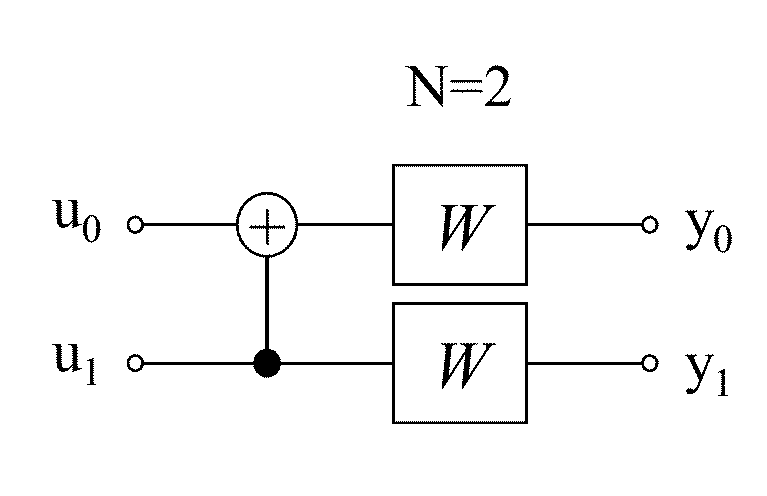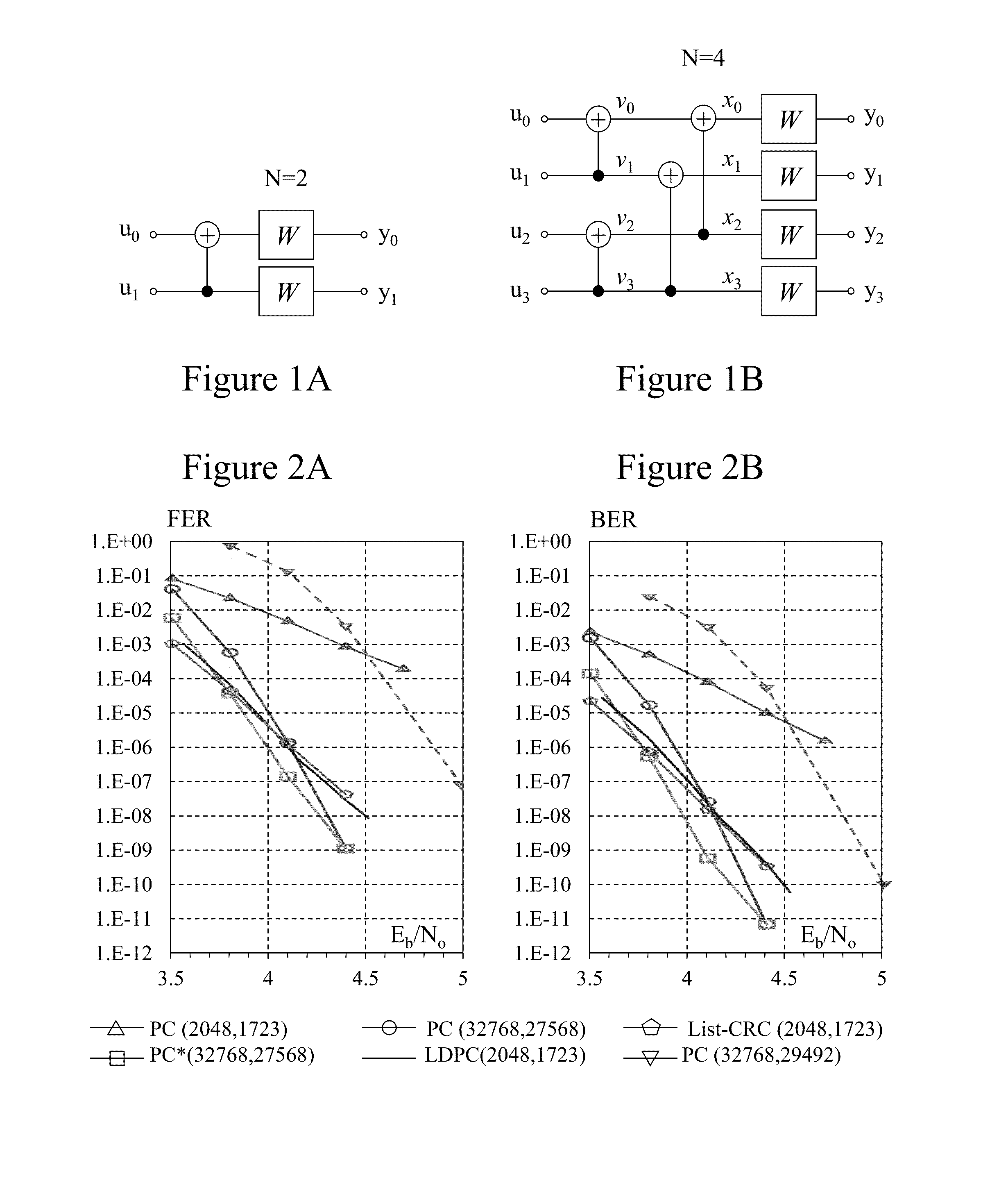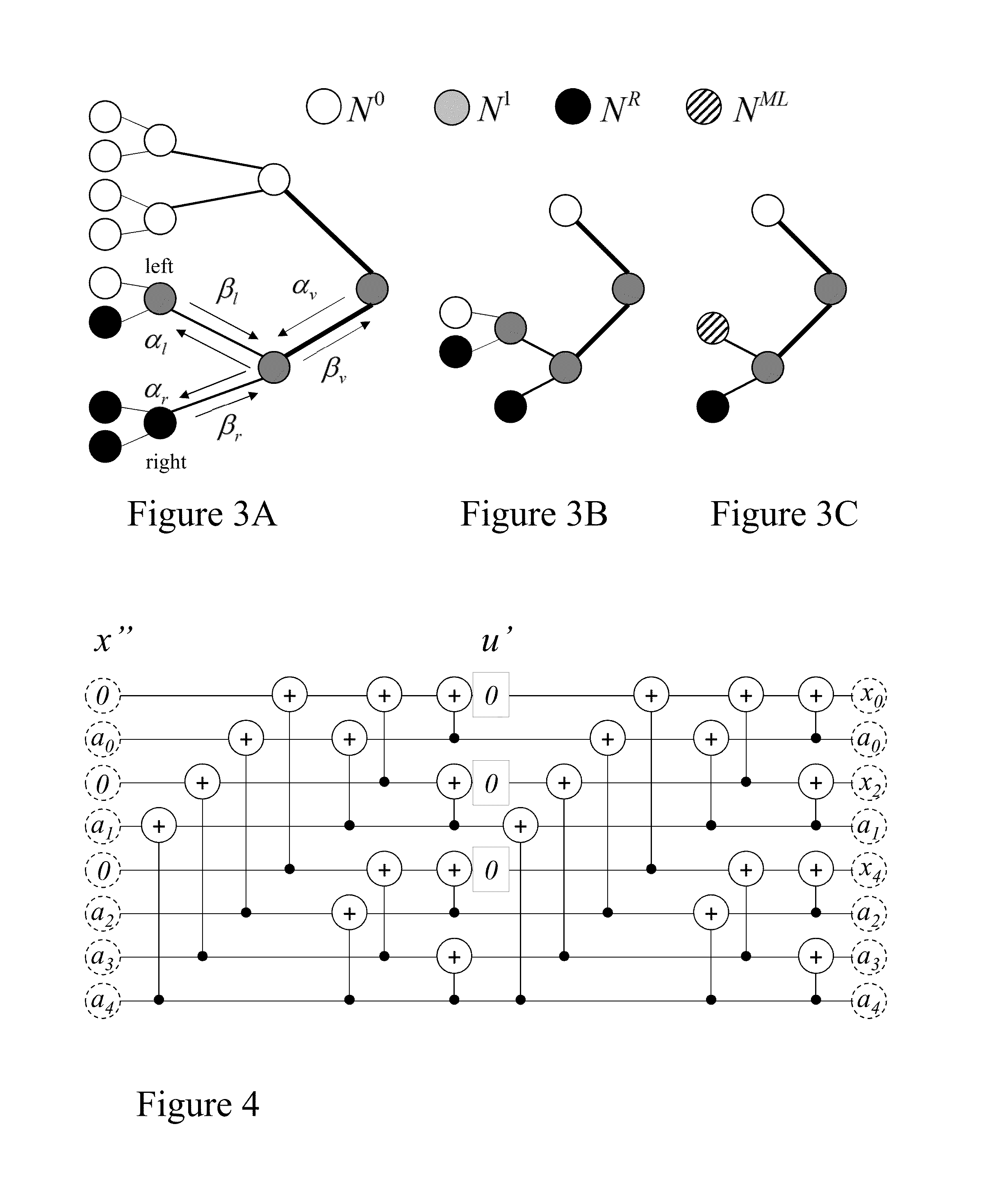Flexible polar encoders and decoders
a polar encoder and encoder technology, applied in the field of communication polar encoders and decoders, can solve the problems of reducing the number of encoders, so as to achieve the effect of flexible encoders and increased throughpu
- Summary
- Abstract
- Description
- Claims
- Application Information
AI Technical Summary
Benefits of technology
Problems solved by technology
Method used
Image
Examples
case 1
[0201) If h=j, then there is a single 0≦i
case 2
[0202) If h≠j and hj is false then there can be no i for which Equation (36) holds. Since 0 is an even integer, we are done with this case as well.
case 3
[0203) If h≠j and hj, then the support of the binary vector j=(j0, j1, . . . , jm−1) is contained in and distinct from the support of the binary vector h=(h0, h1, . . . , hm−1). A moment of thought revels that the number of 0≦iw(h) w(j), where w(h) and w(j) represent the support size of h and j, respectively. Since h≠j and hj, we have that w(h)−w(j)>0. Thus, 2w(h)−w(j) is even. Since h, j ∈ A, and A is domination contiguous, all of the above mentioned i are members of A. To sum up, an even number of i ∈ A satisfy Equation (36), as required.
[0204]Now if we recall that an (r,m) Reed-Muller code has length n=2m and is formed by taking the set A to contain all indices i such that the support of i has size at least r. Clearly, such an A is domination contiguous, as defined in Equation (33). Hence, the following is an immediate corollary of Theorem 1, and states that our decoders are valid for Reed-Muller codes.
[0205]Corollary 2. Let the active row set A correspond to an (r,m) Reed-Muller...
PUM
 Login to View More
Login to View More Abstract
Description
Claims
Application Information
 Login to View More
Login to View More - R&D
- Intellectual Property
- Life Sciences
- Materials
- Tech Scout
- Unparalleled Data Quality
- Higher Quality Content
- 60% Fewer Hallucinations
Browse by: Latest US Patents, China's latest patents, Technical Efficacy Thesaurus, Application Domain, Technology Topic, Popular Technical Reports.
© 2025 PatSnap. All rights reserved.Legal|Privacy policy|Modern Slavery Act Transparency Statement|Sitemap|About US| Contact US: help@patsnap.com



